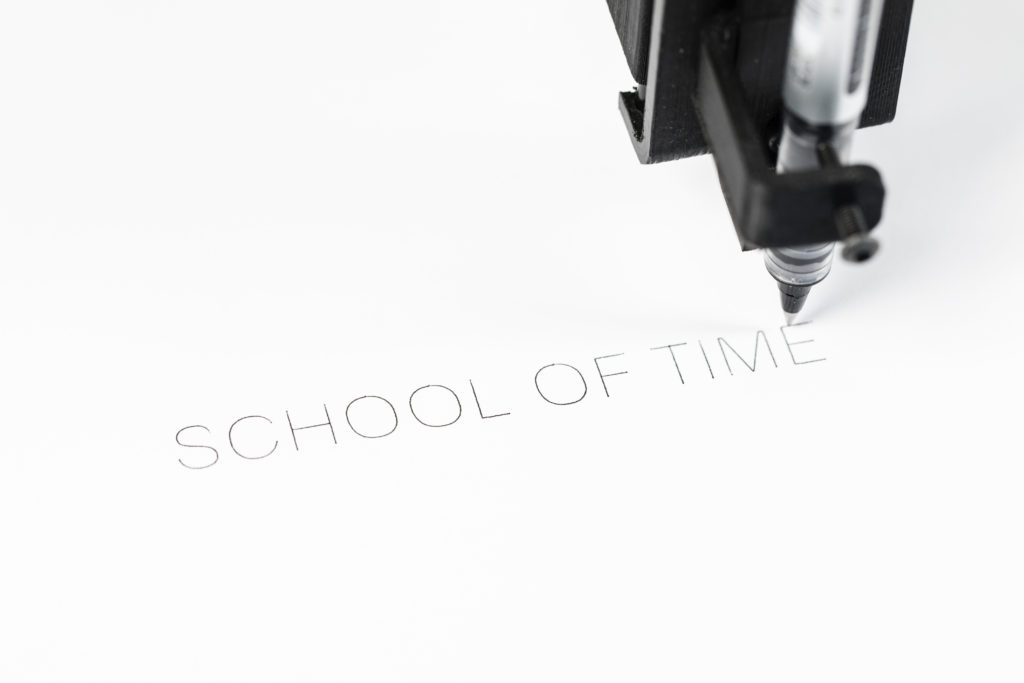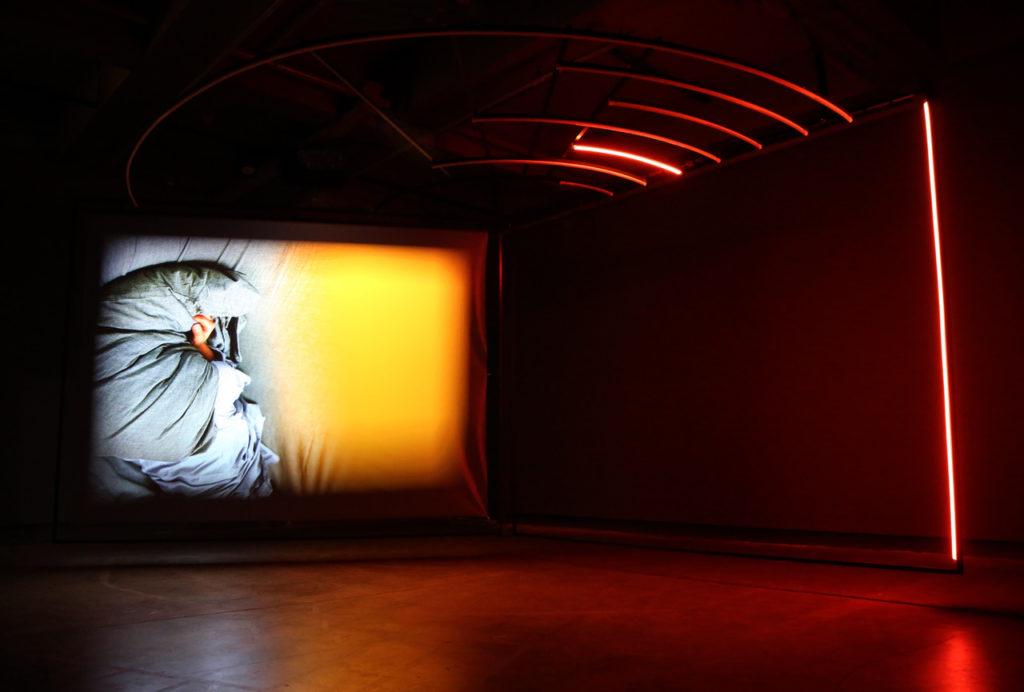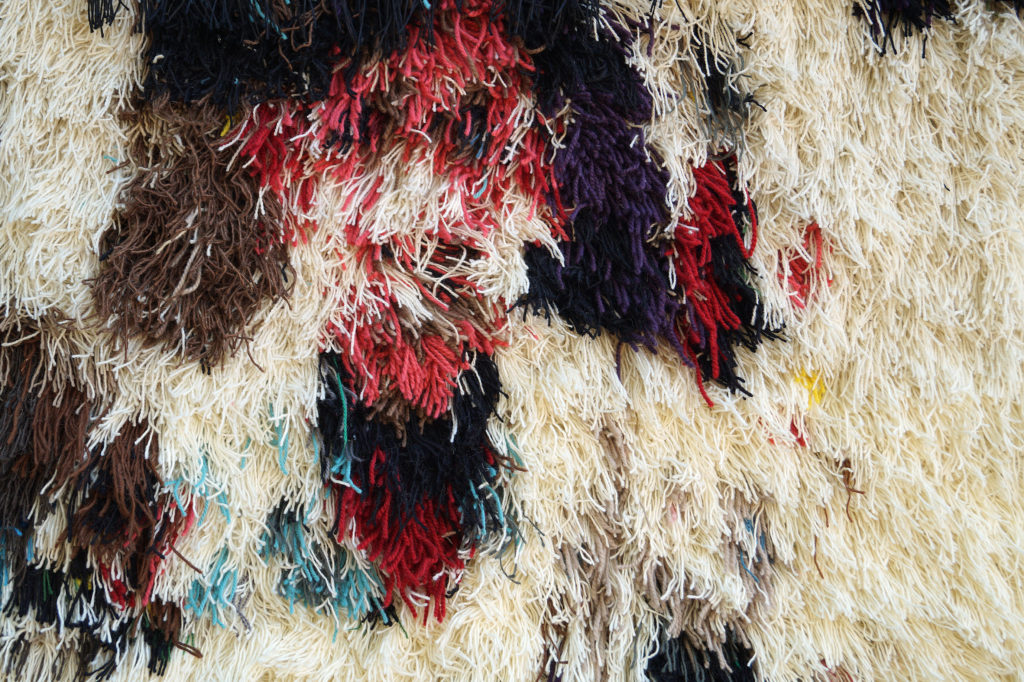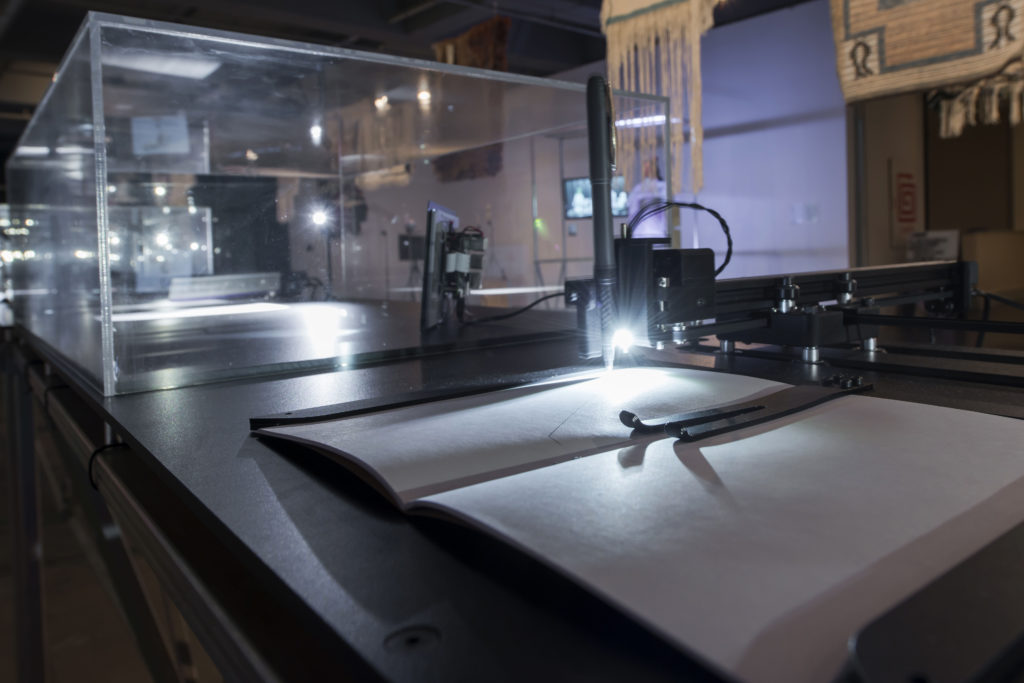Time School or a School of Time

Staged in Salt Galata’s exhibition space, Time School speaks to the overarching concept of the Biennial, A School of Schools, an investigation into the role of learning, knowledge and education through art and design practice today. Its first iteration was shown in April this year at ALCOVA during Milan Design Week under the name School of Time. This show premiered two interactive installations developed by artist group Commonplace Studio, Jesse Howard & Tim Knapen, and a second installation developed by Teis De Greve. For Istanbul, the Time School exhibition has expanded and is featuring works by four new artists: Danilo Correale, Ecole Mondiale, Emilie Röndahl and Helga Schmid, of which the last three all produced new works for this show.
Our lives are ruled by minutes and hours. We race from one thing to the next. Acceleration and hyper-speed are ingrained in our technology-driven culture. Ever-faster machines dictate the pace of life. Our global 24h economy is obsessed with reducing decision-making time and eliminating ‘useless’ time of reflection. Time always comes in short supply. We want to slow down and step out, but time seems beyond our control, as if it’s an external cosmic force.
On the other hand, we feel that the time we read on clocks represents only a tiny inkling of what we experience. Sometimes one hour flies by; sometimes it creeps like a snail. We live in the present, but also in our memories and speculations about tomorrow. Apart from clock time, many other time-dimensions exist. Biological time drives the circadian rhythms of our bodies. Early birds and night owls operate outside of what the clock dictates. Inner time exists only in our consciousness, going by its own rules that define our personal experience of time. And when we discuss environmental issues, it’s not our time but the earth’s time that comes into play with its geological time scales that are simply beyond human imagination.
All of these different time-scales are entwined with clock time — and often conflict with each other. They create a web of heterogeneous temporalities and time paradoxes which lie at the heart of Z33’s Studio Time.
The School of Time is a subtheme within this studio, linking it to ‘A School of Schools’, to explore the relationship between time and learning. In this sense, the school of time is a school for learning on time, just as much as it is a school for un-learning time. How can we unlearn clock time and re-inhabit it, take time in our hands instead of letting it slip away? How can we engage with deep time and the anthropocene question? How can we decolonise modern Western thought and open up to mystic time, spiritual time, or ethno-time? What pedagogical or educational methodologies can arise from within the practice of artists and designers? How can institutes help these practices reach a broader audience?

At the outset, looking very broadly into the relations between time, school and learning revealed that the old Greek meaning of the word skholè (σχολή) refers to a particular understanding of ‘free time’, as in free of labour, or ‘a time for unproductive leisurely study, reflection and discussion’. This free time, meaning free of the demands of outcomes and productivity, is vital for any learning experience, leaving room to reflect, discuss and ponder over things, but also allowing for experimentation that has the freedom to to fail. In today’s society where the neoliberal dogmas of efficiency, productivity and quantification have invaded our schools, this notion of skholè, as non-productive study, clearly is under pressure.
A key element to the Time School’s curriculum of unlearning time is taking a vitalistic approach to time. Starting from philosophers such as Bergson or Deleuze (amongst many others), time is seen as an active, dynamic and vital force. What interests them is not time as linear movement — going from past to present and towards the future — but the breaks and ruptures, the in-betweens and gaps, the fundamental implication of past-present-future in each other and in our own subjectivity. For these philosophers, time cannot be translated into movement and moments but should be understood as a purely temporal dimension, as duration (or durée, in Bergson’s words).
 Emilie Röndahl, Google-Weaving Stop Time, copyright Emilie Röndahl
Emilie Röndahl, Google-Weaving Stop Time, copyright Emilie Röndahl
Paradoxically enough, within the current development of the attention-based economy — where catching someone’s eye has become one of the most viable commercial products — it seems that precisely the ‘time of attention’ is what has gone missing.
In the school of time, attention is not about the instantaneous, but rather the time of attention we take to look at things, to understand, and to look again. It is the time that is linked to the Greek god Kairos. He propagates time not as something measurable (as does his counterpart Kronos) but as the ‘right’ moment, the moment you have to seize and grab, whether it’s the moment of creativity or of making a point in a discussion, or the moment where learning turns into true understanding. By allowing and grabbing these moments — Kairos time — allows us to deepen our attention instead of commodifying it.
In opposition to the attention-economy, which is focused on targeting individuals to turn them in multiplied profit, the school in the Greek sense also articulates the importance of being together. School time is a common time, a shared experience of those who learn and those who open their knowledge to the community. This common and shared way of producing knowledge is explored by all of the artists that are part of Time School, which tries to establish new models for learning and sharing, for creating communities of people that can move ‘in-between’ different learners and those who learn, to crossover and access different knowledge fields such as science, education, technology, philosophy and cultural practice.

In art and design, knowledge is never only produced in theory but also in and by practice, through experience. The artists in Time School work from correspondences between thinking and making, between material flows and thought processes. The six different projects in Time School explore and demonstrate alternative durational practices such as weaving, travelling, note-taking, drawing and filmmaking. They are meant to pique the viewer’s curiosity by opening up bits of knowledge and inviting everyone that comes to the school of time to become part of it — to become a time-explorer him or herself.
This way the school of time’s focus on attention and exchange is joined with the articulation of ‘curiosity’, an openness to learn about the world, both from our close and personal space to the space of the global world we live in. Perhaps the role of cultural spaces or exhibition-making is precisely to trigger this, and to accommodate the desire to know, to learn, to research, to connect local issues with global complexities, and to create new learning environments based on a common desire to share knowledge in a dialogic space. In this sense The School of Time exhibition and the collective research that has preceded it, is not only an exhibition but a temporary and nomadic community of artists and designers interested in researching time; where knowledge is produced not only in theory but in and through durational practice: in making, reading, weaving, travelling, eating and resting together.
Footnotes
Beller, Jonathan, Paying Attention, Cabinet Magazine, Issue 24, winter 2006-2007.
http://www.cabinetmagazine.org/issues/24/beller.php
Crary, Jonathan, 24/7: Late Capitalism and the Ends of Sleep. Verso, 2013.
Haraway Donna, Staying with the Trouble: Making Kin in the Chthulucene. Duke University Press, 2016.
Ingold Tim, Making. Anthropology, Archaeology, Art and Architecture. Routledge, 2013.
Stengers Isabelle, In Catastrophic Times: Resisting the Coming Barbarism. Open Humanities Press/Meson Press, 2015.
Liddell Henry G., Robert Scott, A Greek-English Lexicon, Entry: Skholè